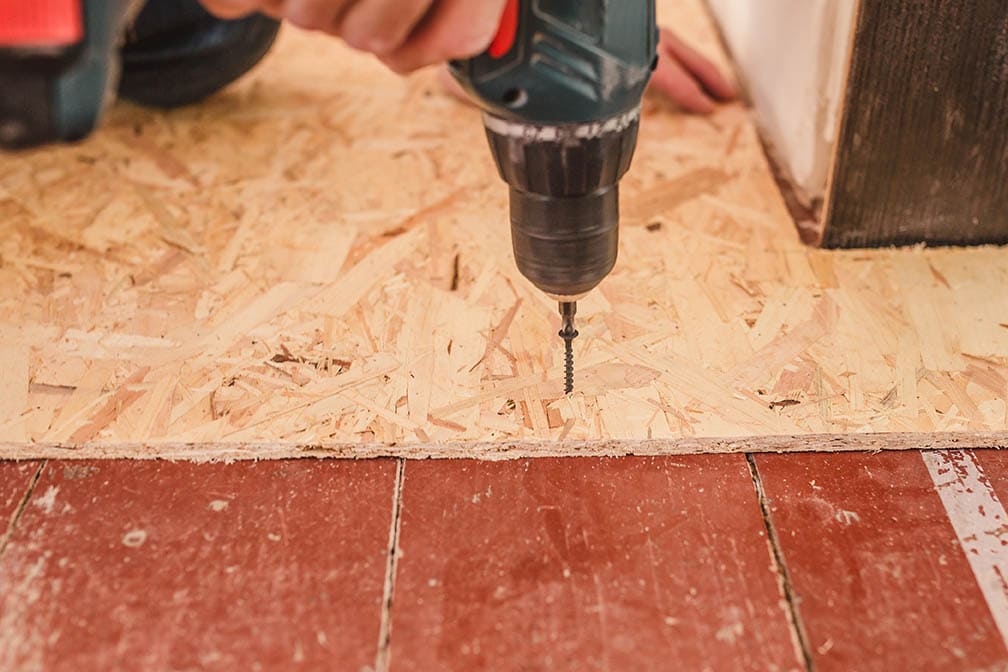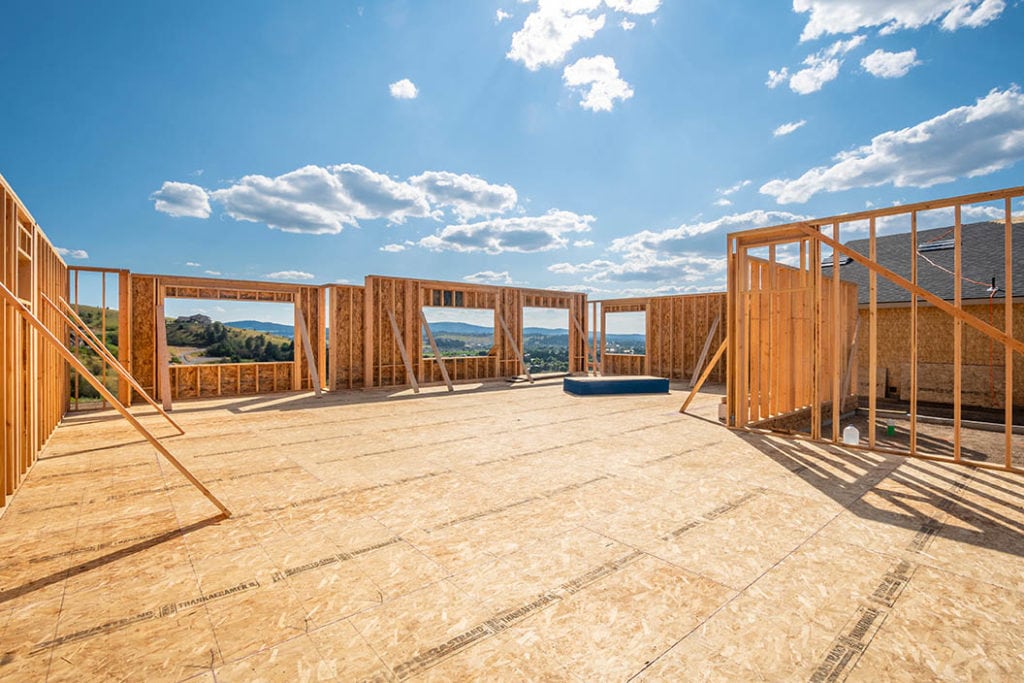How Much Does It Cost to Replace a Subfloor? (2025 Update)
-
Codee Chessher
- Last updated:

Necessary but often overlooked, subfloors are a critical part of any building’s foundation. When your subfloor is damaged or worn, it can cause a whole host of issues for the rest of your home. People aren’t usually educated about this part of their house. You can expect to pay between $1–$7 per square foot of subfloor that needs to be replaced, plus labor. Keep reading as we explain further.
What Is Subfloor & Why Is It Important?
Subflooring is a type of structure secured to your flooring finish that gives it durability. Without the subfloor, your home couldn’t hold all the furniture and other items that go inside. When the subfloor is damaged, it can make part of your house unstable to walk around on.

How Much Does It Cost to Replace the Subfloor?
You can expect to pay between $1–$7 per square foot of subfloor that needs to be replaced, plus labor. Labor costs run about $20–$40 per hour for this kind of work. For a small room, you’re looking at about $500. A larger room may run you between$700–$1,000, depending on the square footage involved.
If the joists are damaged, things can change very quickly. When joists are damaged, the contractor has to rip up the flooring in order to get a good look at the damage and to determine what kind of repair has to be made. Sometimes the contractor can put a new joist next to the damaged one and secure them together, aka sistering. Other times, the joist might just need replacing.
- Joist replacement: $5,000–$10,000 (per 500 square feet)
- Joist sistering: $100–$300 per joist
- Subfloor replacement: $1–$7 per square foot in materials
- Labor: $20–$40 per hour
Even without any joist work, you’re looking at a total of $500–$700 per room. That figure doesn’t even include finishing the flooring back to the way it was, so expect to pay for your flooring to be installed again too!
Additional Anticipated Costs
The total cost gets even more expensive if the room’s subfloor has concrete, as many basement subfloors do. To pour concrete, expect about $6 per square foot on top of hourly labor. Reinforced concrete costs a bit more, often between $9–$10 per square foot.
Because the most common cause of subfloor damage is leaking water, you may wish to have a plumber diagnose whether you have any substantial water leaks. Plumbers run between $20– $60 an hour, sometimes more in urban areas.
If a short-term water leak was to blame for the subfloor getting wet, you may not need to shell out for a replacement at all. If the leak was relatively minor, you can remove all the furniture and flooring from the area and let it dry. You can mop up any remaining water and turn on a fan to hasten the drying process.
How Long Does Subflooring Last?
Most subfloors can last as long as 20–30 years, depending on the materials used and the moisture levels. If there’s a lot of moisture in the home, it could reduce the subfloor’s lifespan by as much as 10 years. Although most subfloors are waterproofed prior to installation, the moisture barrier gets easily damaged. Water doesn’t pair well with plywood, unfortunately.
Find a flooring specialist in your area, and get free, no-commitment estimates for your project.Consult a flooring expert

How to Tell if Your Subfloor Needs to Be Replaced
There are a few telltale signs that you can be on the lookout for to know your subfloor needs to be replaced or at least looked at by a professional.
- The floor is sagging. Floor sagging often means you have a rotted or failing subfloor, possibly due to a damaged joist.
- A musty smell is coming from the floor. Mildew and mold can grow on a wet subfloor and cause bad odors. There may be an ongoing leak to blame.
- Cracked or popping tiles. If your tile is coming up or cracking, there’s most likely an accumulation of water underneath.
- The floor is uneven. Uneven floorboards reduce your home’s value and signal a subflooring
- The floor squeaks. Squeaking can be a loose component within the subfloor, typically a nail rubbing against another part.
- Related Read: 9 Different Types of Flooring

How to Take Care of the Subfloor
- Add a moisture barrier. This is a type of waterproof underlay added to the subfloor to reduce the chances of water leaks negatively affecting the subfloor.
- Add caulk. Always use caulk to fill in any seam points, like the heads of nails and any other exposed surface on the subfloor. Contractors may or may not do this when replacing the subfloor.
- Ensure measurements are accurate. The most common reason for subfloor problems is improper installation because of inaccurate measurements during the planning stage.
Conclusion
Subfloors are a vital, yet unseen, part of any home that keeps your floor stable for you to add furniture and walk around safely. When the subfloor fails because of water damage or any other reason, it’s imperative to have it repaired as soon as possible.
Featured Image Credit: VanoVasaio, Shutterstock
Contents
